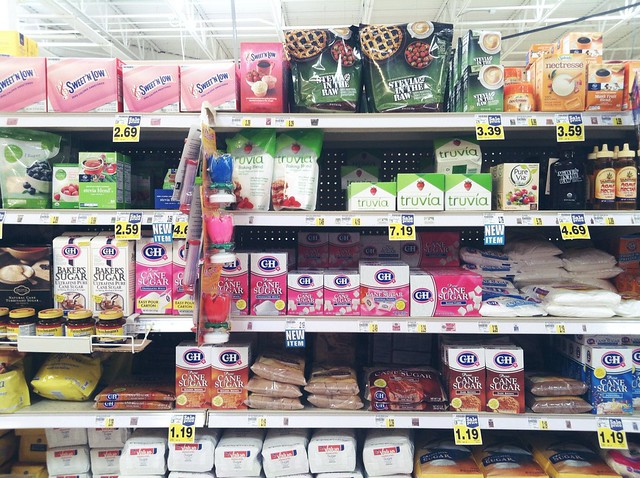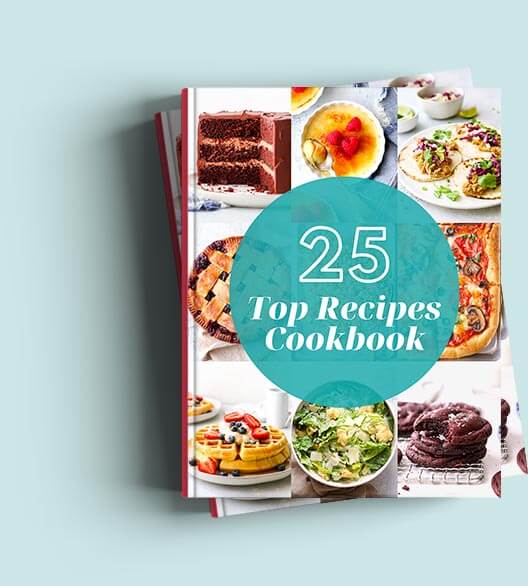Sugar, Part 3: Sugar Substitutes and Sugar-Free Baking
August is SUGAR month on Completely Delicious! See my previous posts— Sugar, Part 1: Why Sugar is Important in Baking and Sugar, Part 2: The Different Types of Sugar (+ How to Make Brown Sugar).
We’ve already talked about how sugar plays a very important role in baking, and shouldn’t be seen just as a sweetener. That being said, many people want or need to reduce their sugar intake while still enjoying delicious baked goods. Which they absolutely should! So today we’re going to talk about sugar substitutes and sugar-free baking.
Refined Sugar Alternatives
Oftentimes what people are really looking for when they want a sugar substitute is an alternative to refined table sugar. So how do sweeteners like honey and maple syrup hold up in baked goods? These days you can find recipes calling for any kind of sweetener you like, and that’s always an easy place to start. You can also adapt recipes that use granulated sugar, but that may take some trial and error to figure it out.
Honey, agave nectar, and maple syrup are all great options if you’re looking for an alternative to granulated sugar in your baking. They are all sweeter than sugar, so you won’t need to use as much. Also since they are liquids, the other liquids in the recipe will need to be adjusted. It’s best to reduce the oven temperature by 25 degrees F to prevent over-browning. And finally, honey in particular has a very distinct flavor that should be taken into consideration before making a substitution, as you don’t want it overpowering the other flavors.
If you’re looking to substitute raw or turbinado sugar for granulated sugar, feel free to do so 1:1. But note that turbinado sugar contains more moisture, so you may need to make other adjustments. It also has a subtle molasses flavor.
Sugar-Free Sweeteners
Stevia is derived naturally from an herb 40 times sweeter than sugar and is currently very popular. Baking recipes using it can be found all over the web. It can have a licorice-like aftertaste, but brands like Truvia have done a good job eliminating it.
Sucralose (Splenda), Aspartame (Equal, Nutrasweet), and Saccharin (Sweet ‘n’ Low) are artificial sweeteners that have sparked ongoing debates about how hazardous they are to your health, though all are deemed safe by the FDA. Most experts recommending limiting consumption, just as you would with sugar. Baking with these substitutes is possible, though tricker. As with Stevia, since they are all non-sugars, it’s best to stick with recipes that have been developed specifically for them, at least in the beginning.
Additional Resources and Helpful Links
Here are some posts from other bloggers that you may find helpful if you’re looking to make sugar substitutions in your baking:
Greatist provides a creative list of 32 Sugar Substitutes for Any and Every Situation.
Gluten-Free Goddess has great info on the different types of sugar and sugar alternatives in her post, Sugar Blues.
Kalyn’s Kitchen, which focuses on healthy recipes, has a whole category of low sugar desserts and baked goods.
Marla of Family Fresh Cooking explains why she uses Stevia in her sugar-free lifestyle.
Note: I know this is not a comprehensive list of granulated sugar substitutes and sugar-free sweeteners. I am not an expert, just a gal with a desire to learn and share. If you have something to add, please leave a comment!




Sorry, I hate to be ‘that person,’ but I just wanted to point out that Stevia is not artificial and should not be lumped in with chemical sweeteners such as aspartame. Stevia is a naturally occurring herb and has been around for a long time.
You’re right, thank you! And I knew that, just didn’t think that paragraph through very well. It’s been changed!
Great post, and thanks for the mention! I am definitely not an expert on this, but one thing I have learned in my baking experiments is that you will get the best flavor by combining small amounts of brown sugar (or sugar) with the artificial sweetener or Stevia. (I tried this first with Splenda, and then when I found a granulated stevia I like and wanted a more natural alternative, with Stevia in the Raw. In both cases, even as much as a tablespoon or two of “real” sugar really improved the flavor.)
I have had pretty good luck substituting both Splenda/Stevia granulated 1:1 for sugar in simple baked goods. Of course my baking skills are pretty basic, so I haven’t tried anything too complicated. Marla really comes up with some stuff that looks at Family Fresh Cooking. Another blog that does a great job with low-carb baking is Carolyn from All Day I Dream About Food. She uses Swerve, which is another natural low-cal sweetener. I bought some of that and plan to experiment with it more.
Good post! I used to buy Splenda, but you just can’t bake with it the same way you can with sugar. Use too much and it turns the texture of your stuff weird. I could always taste it just a bit, too. I recently changed over to the C&H granulated stevia in an effort to get away from the fakey chemical sweeteners and have been absolutely converted. The fact that you use half the amount and are physically taking in half as much sugar is enough to convince me to keep buying it, though it doesn’t hurt that they seem to put out coupons fairly often. The only thing I have been wondering about but haven’t had a chance to really check into is the overall reduction in volume of any batter or filling due to the reduced amount of sugar. I haven’t run into any trouble yet but it seems like it could affect the browning and/or baking time for certain recipes.
But anyway, very interesting topic and good information!
Yes during the week I specify any meal is easily changed with another and this meal plan is for a family so it should work well with yours. The first week is free.